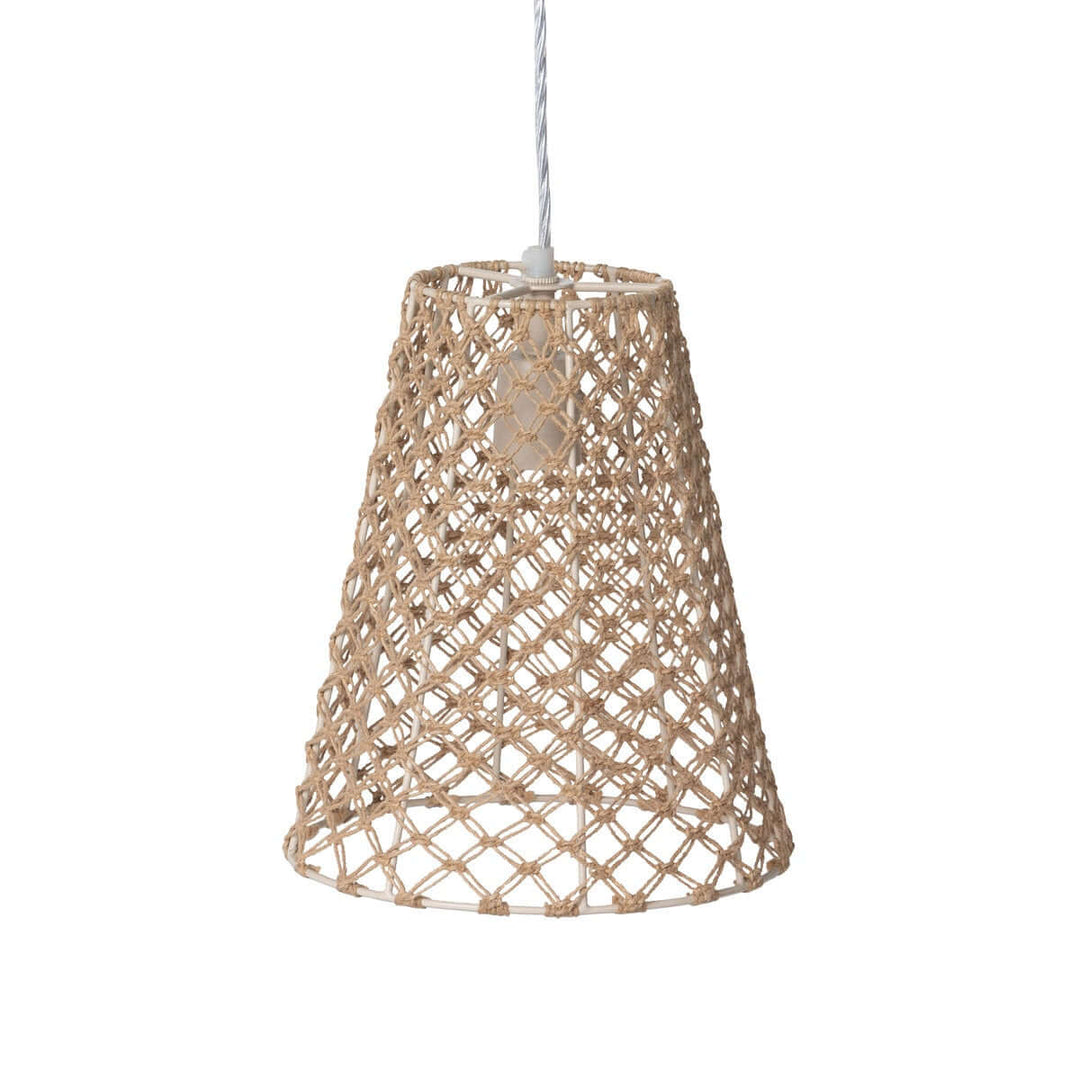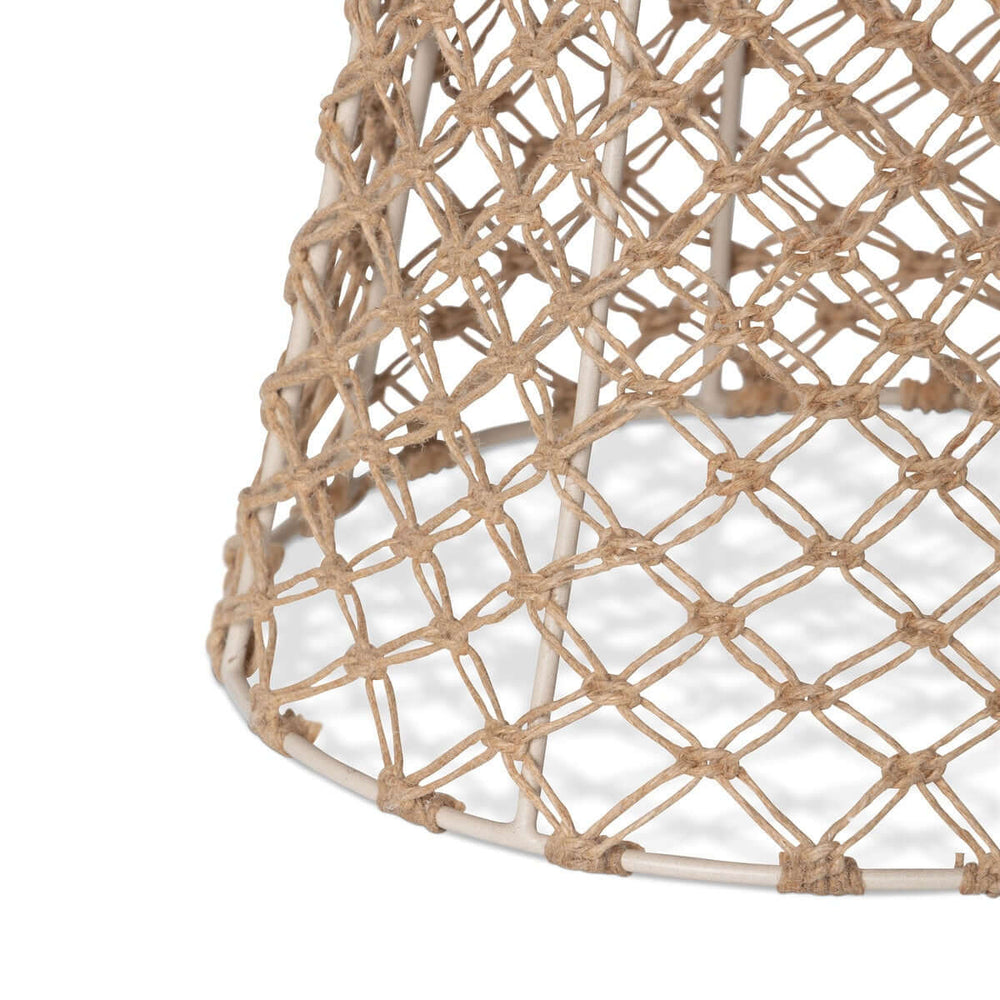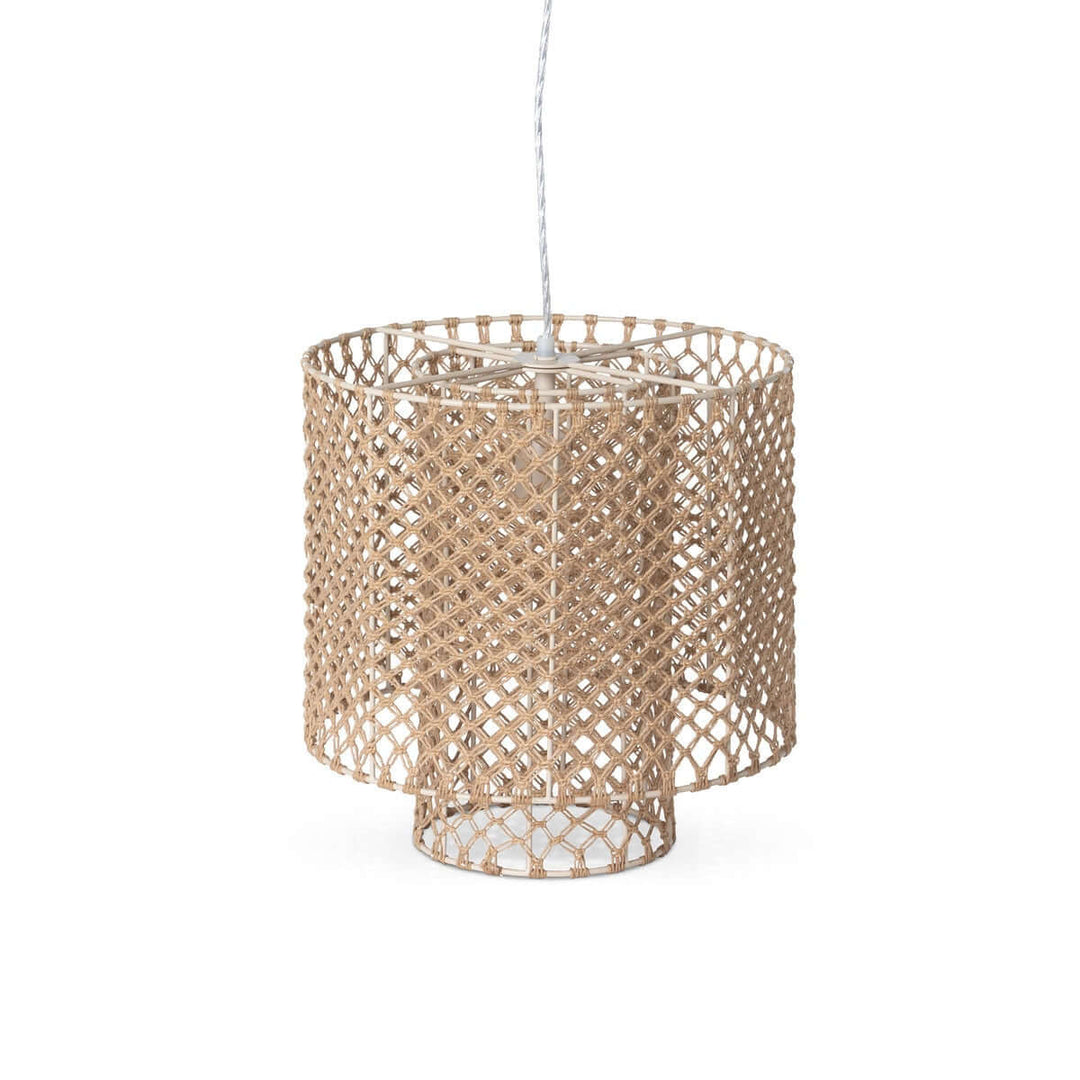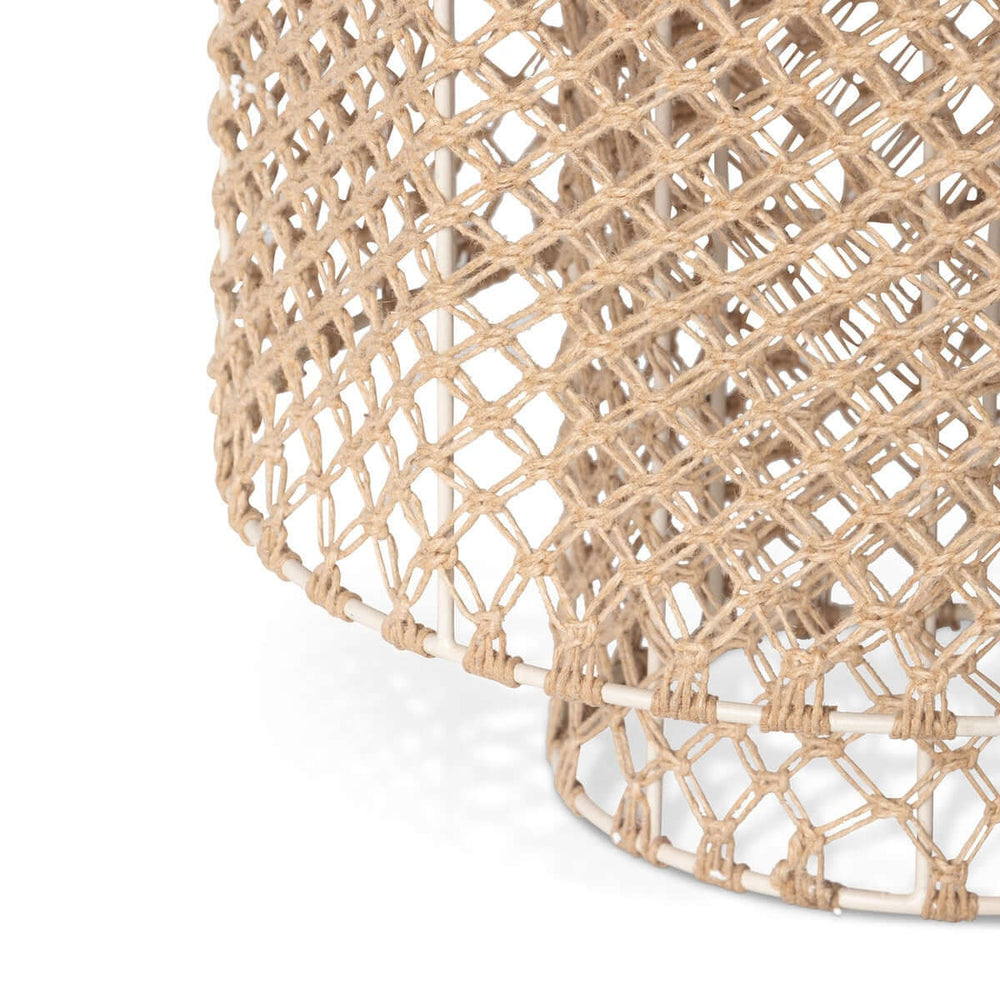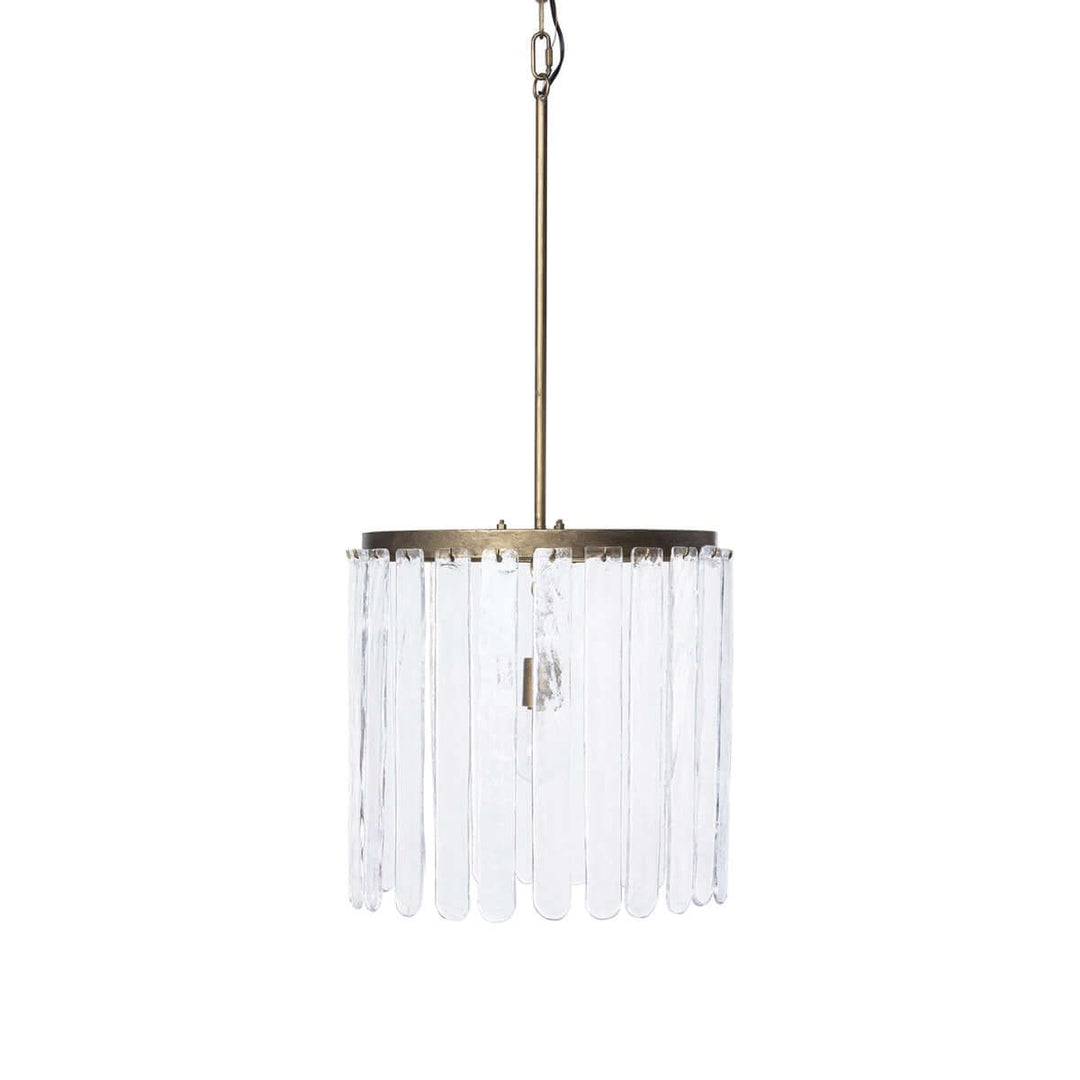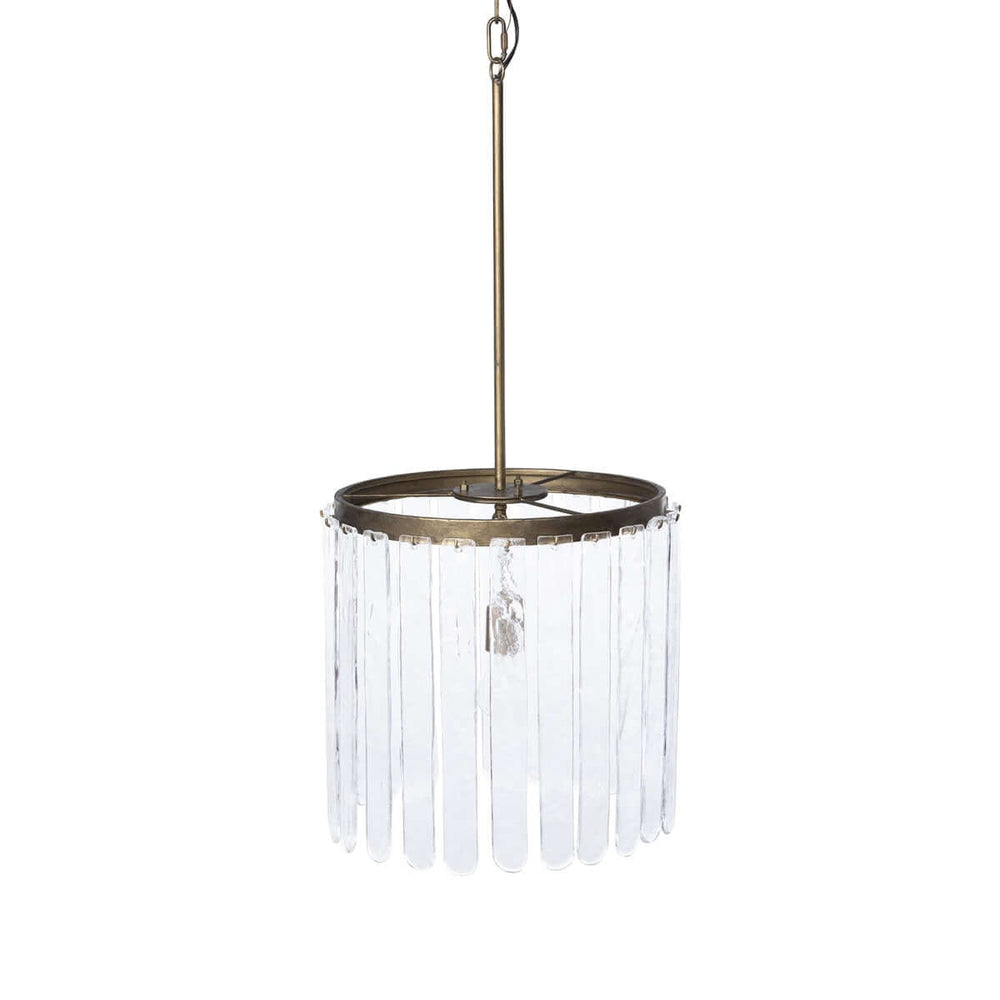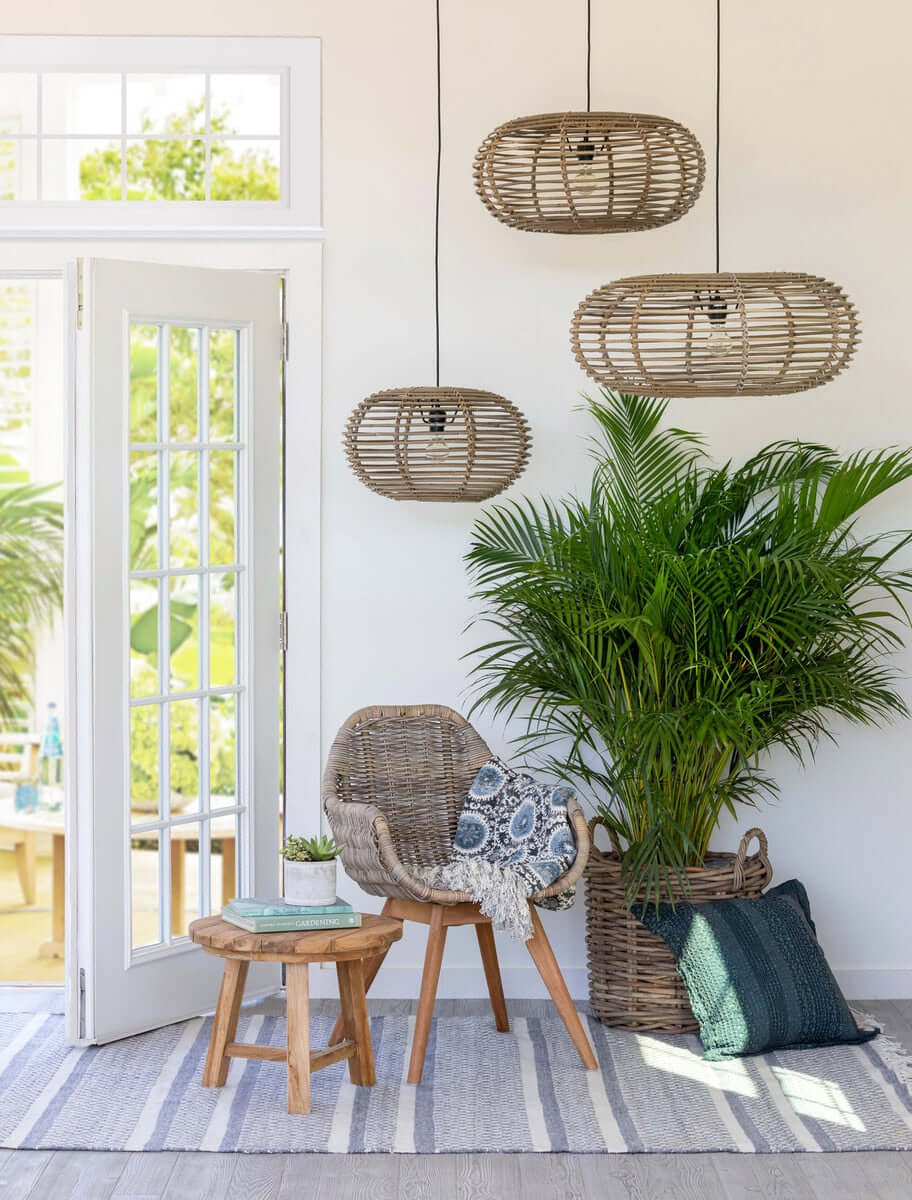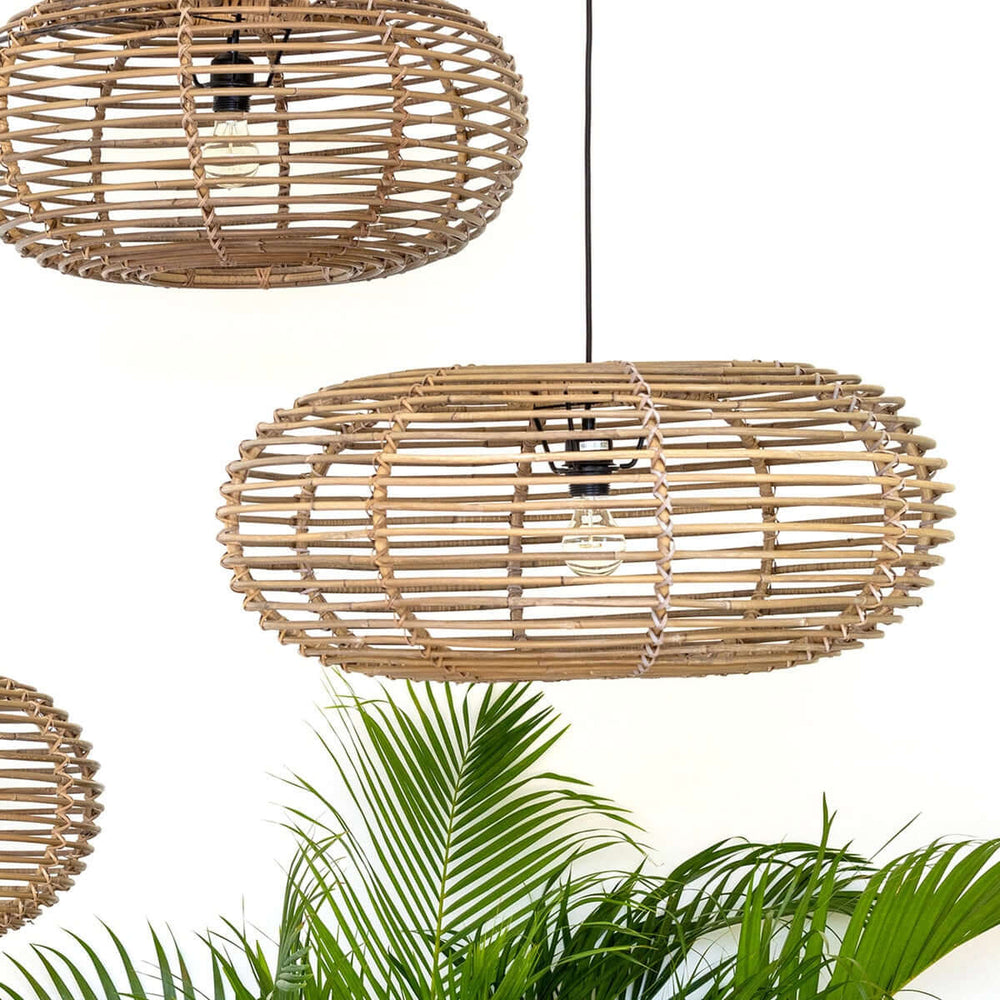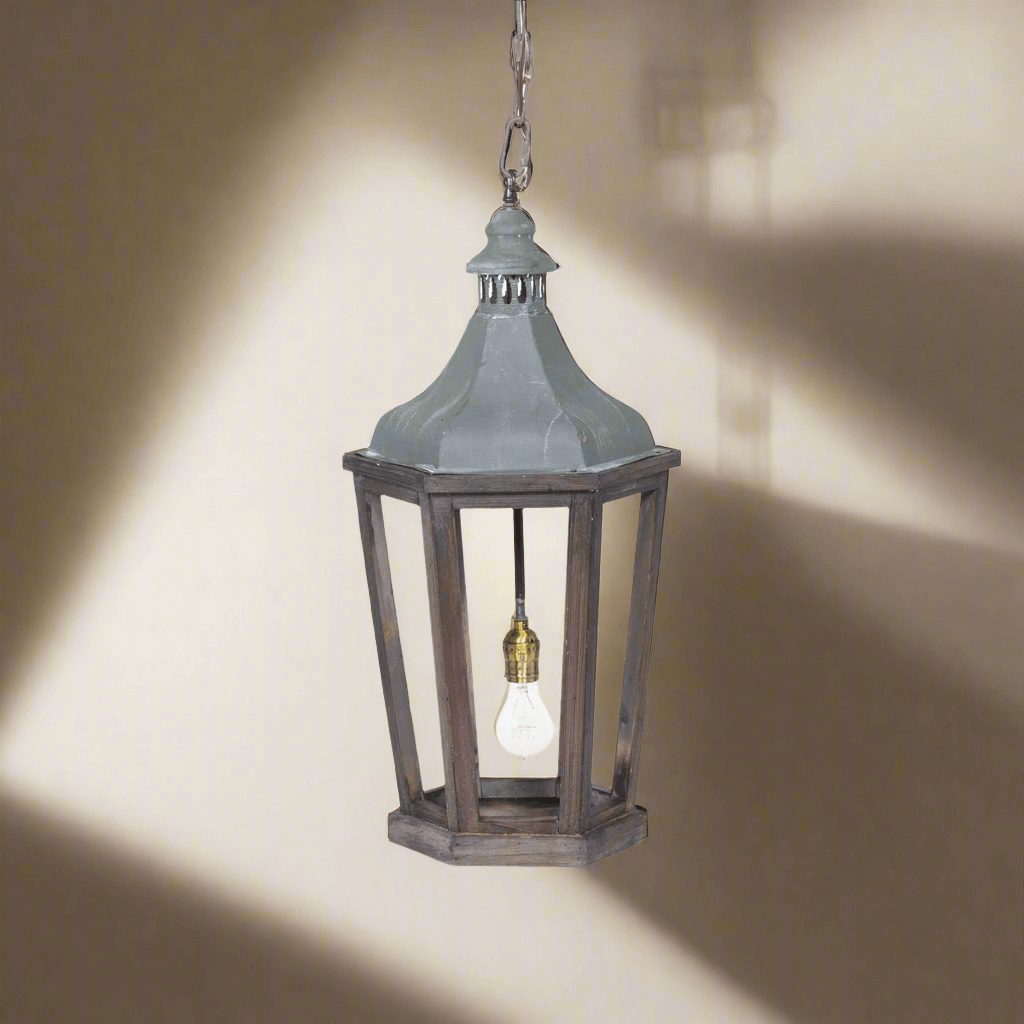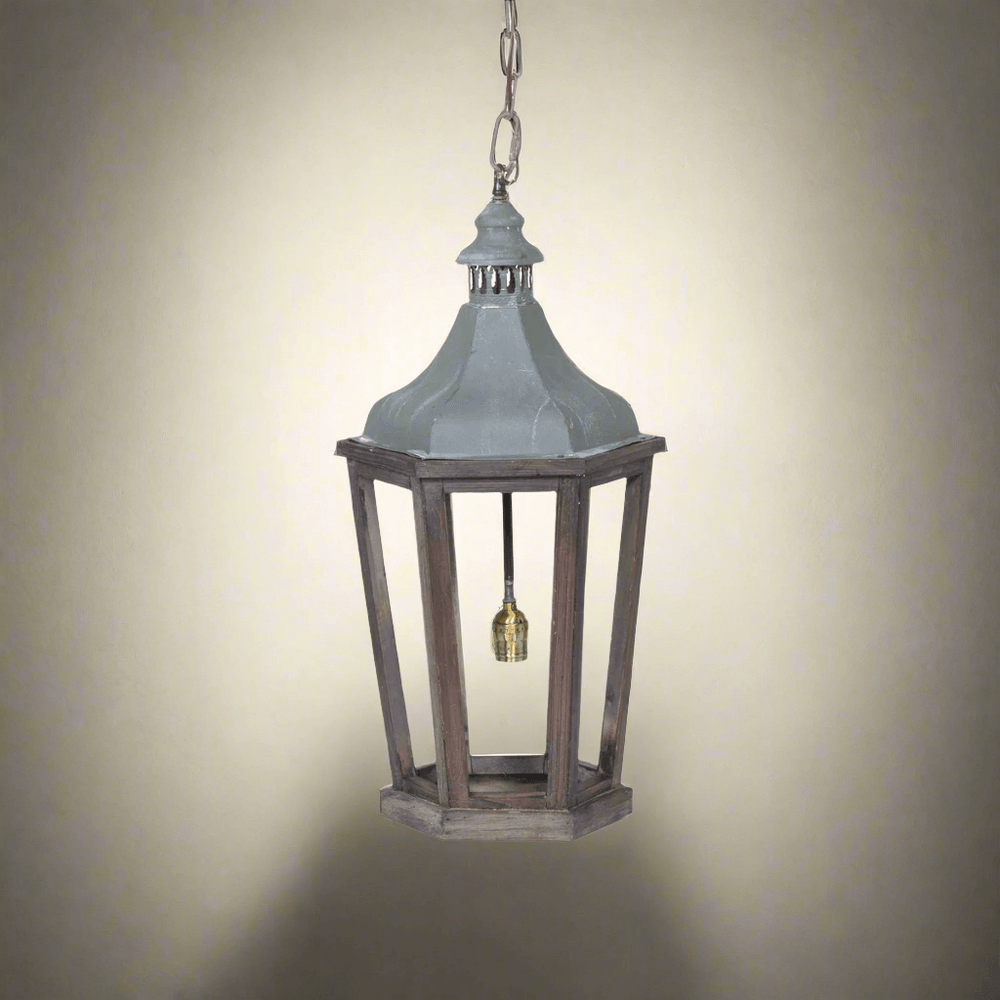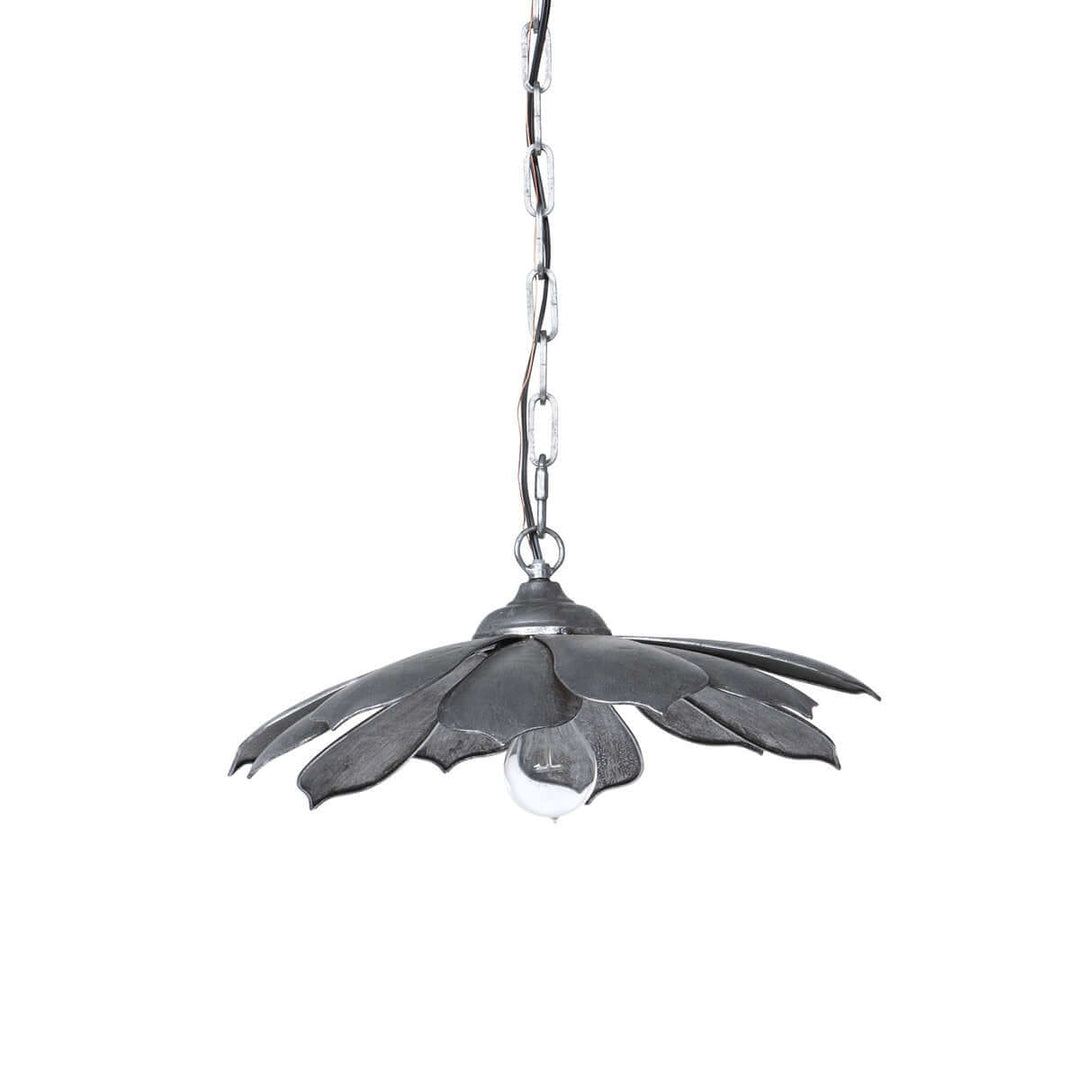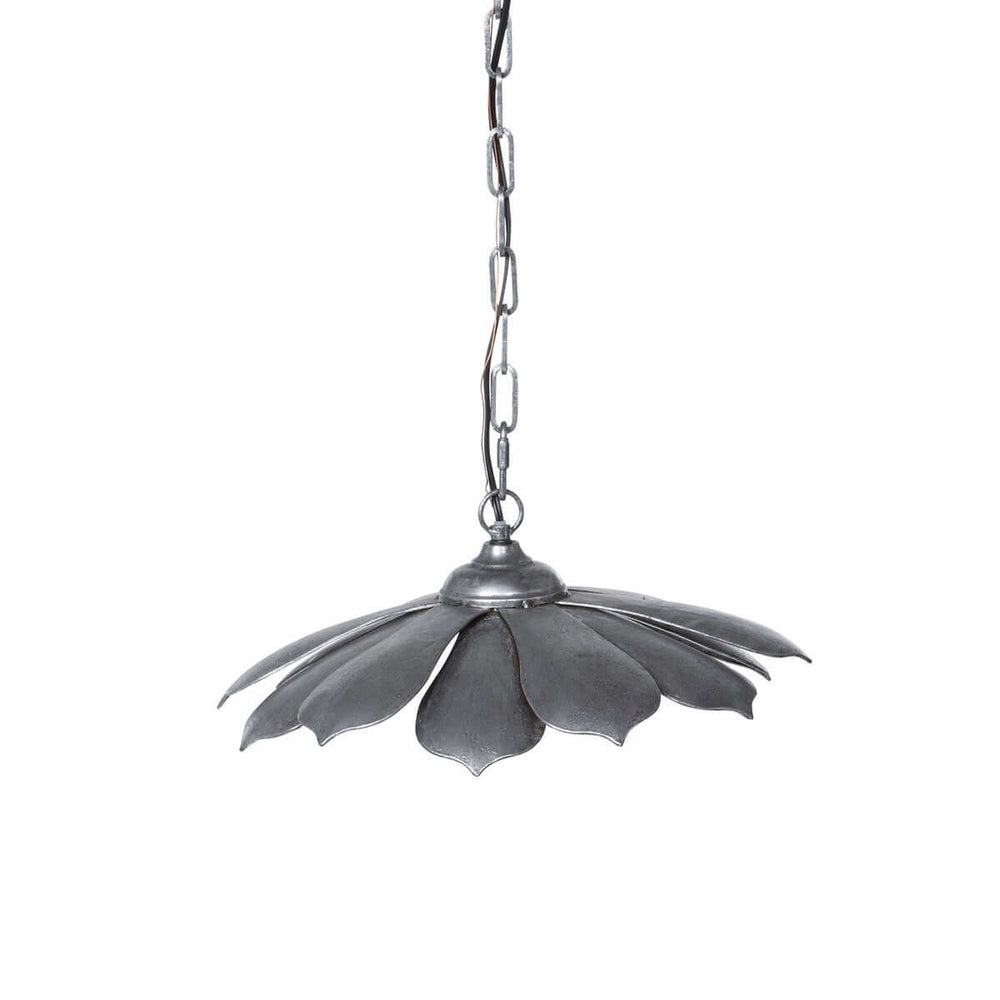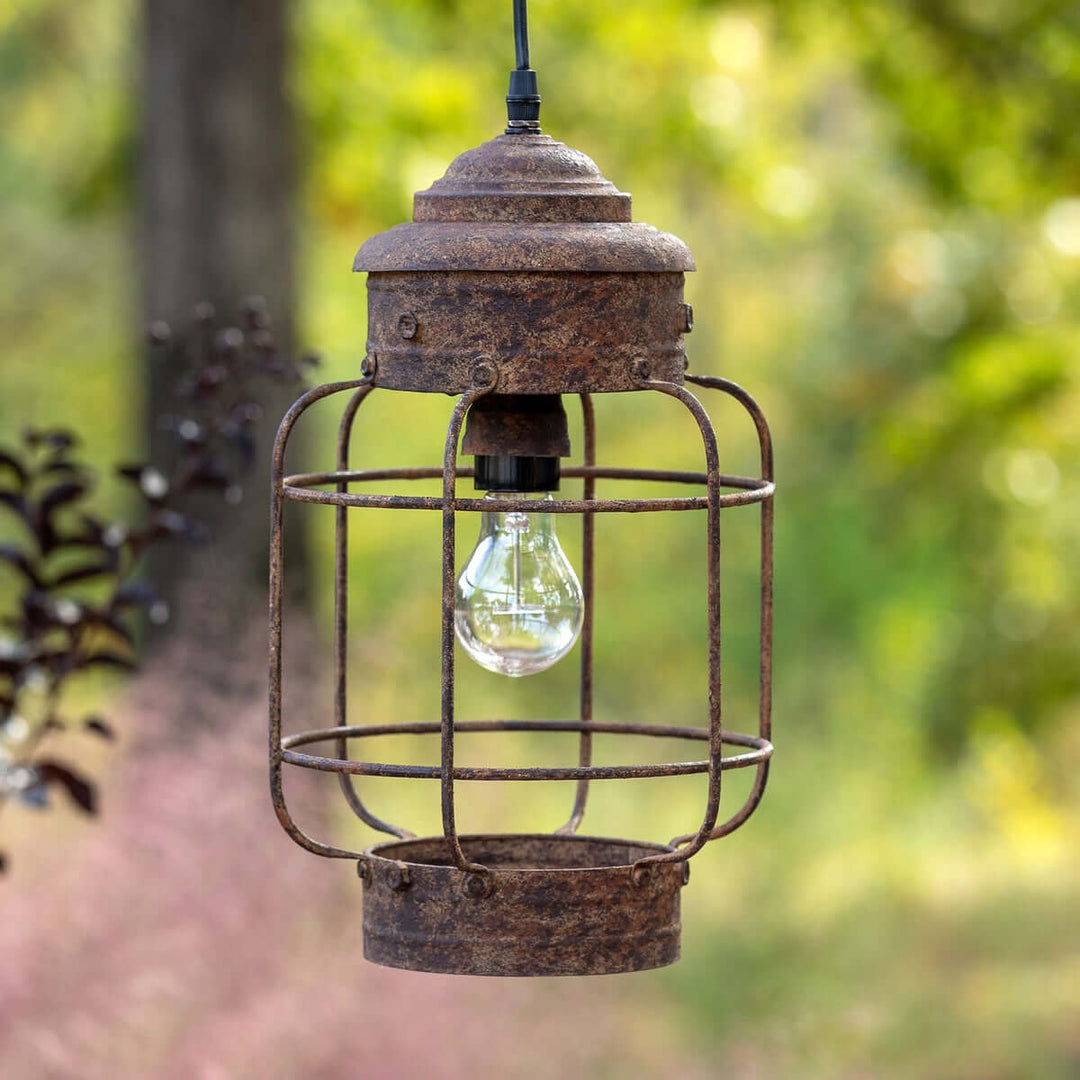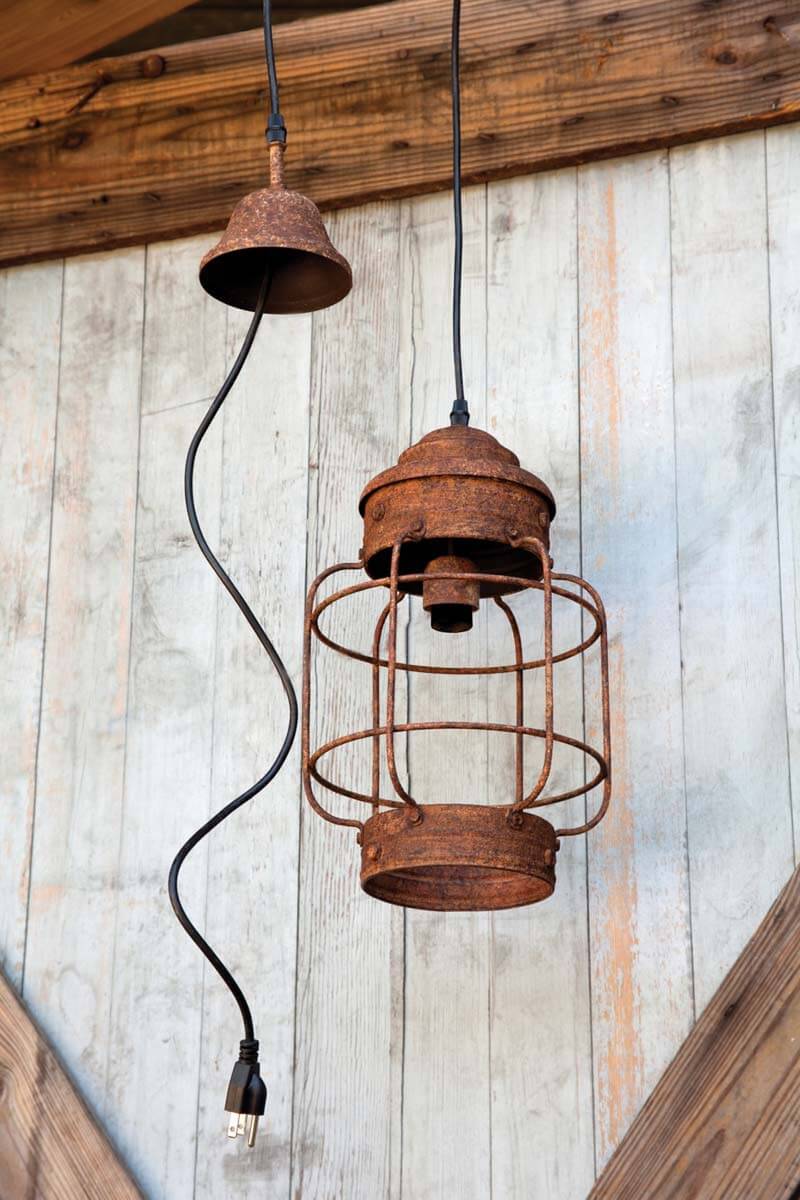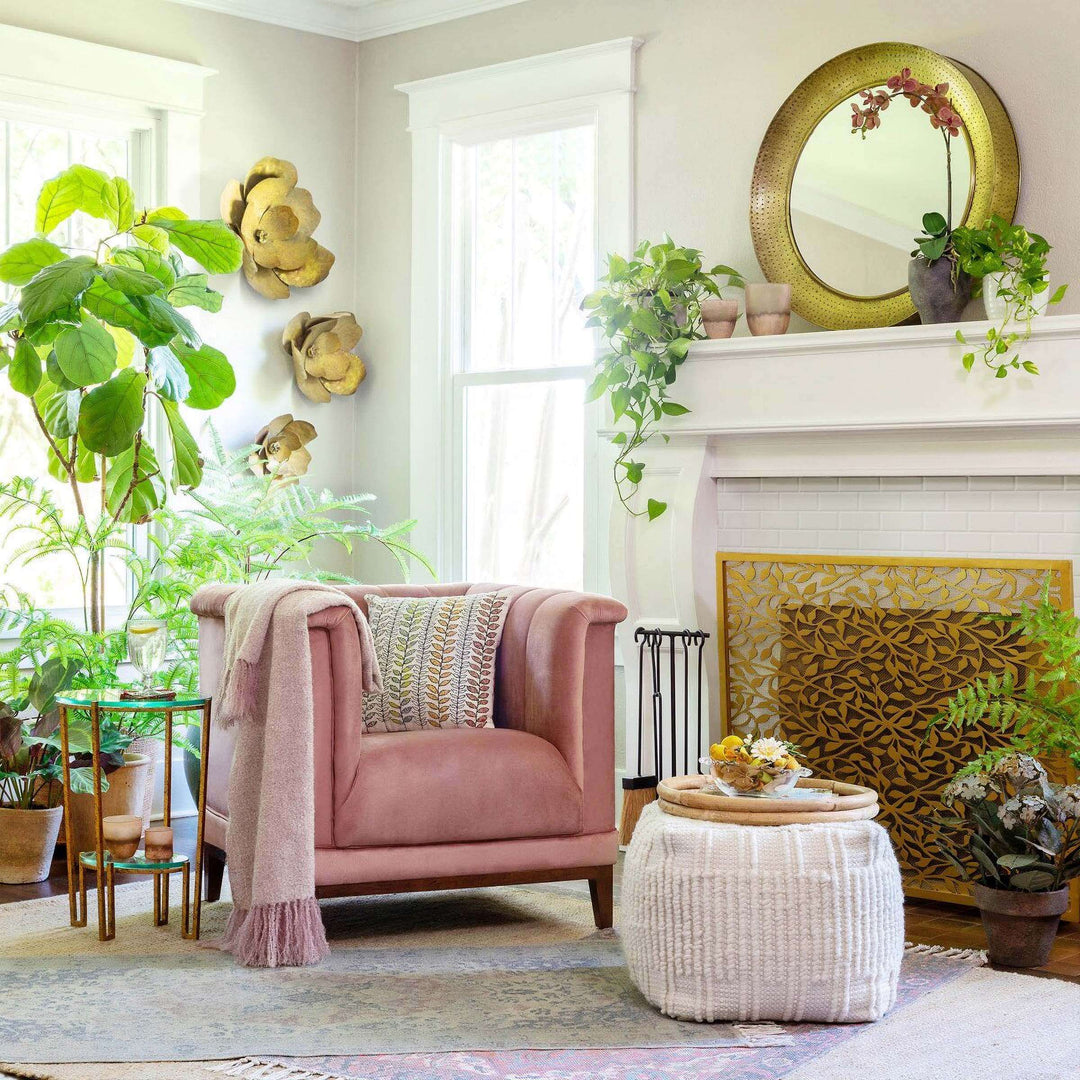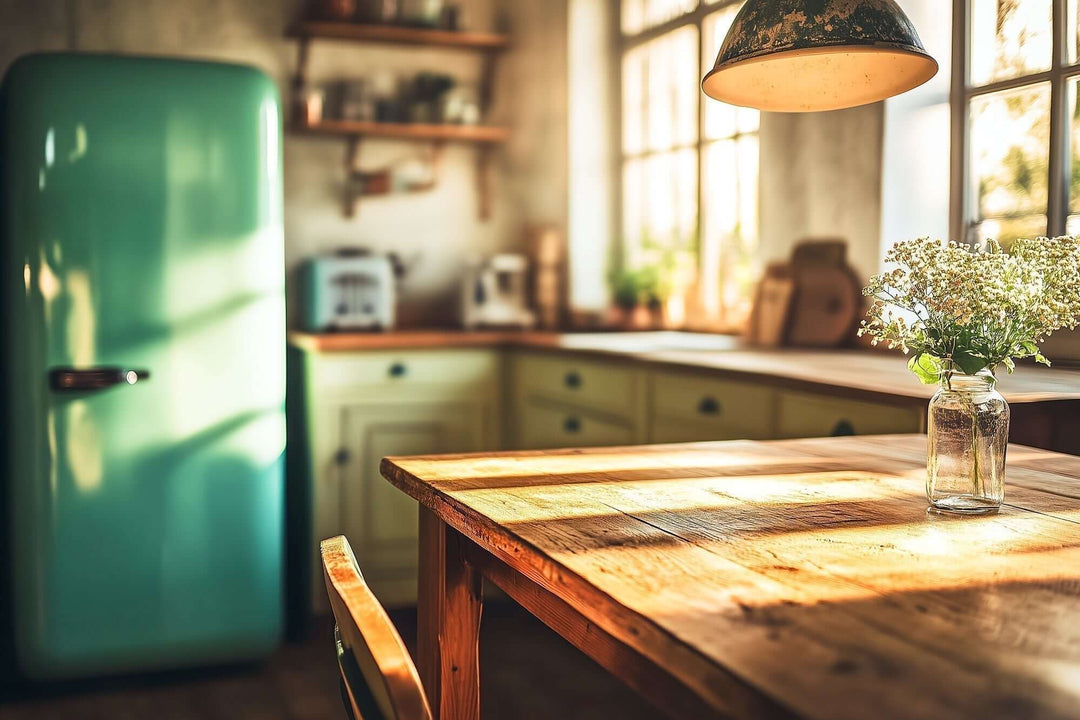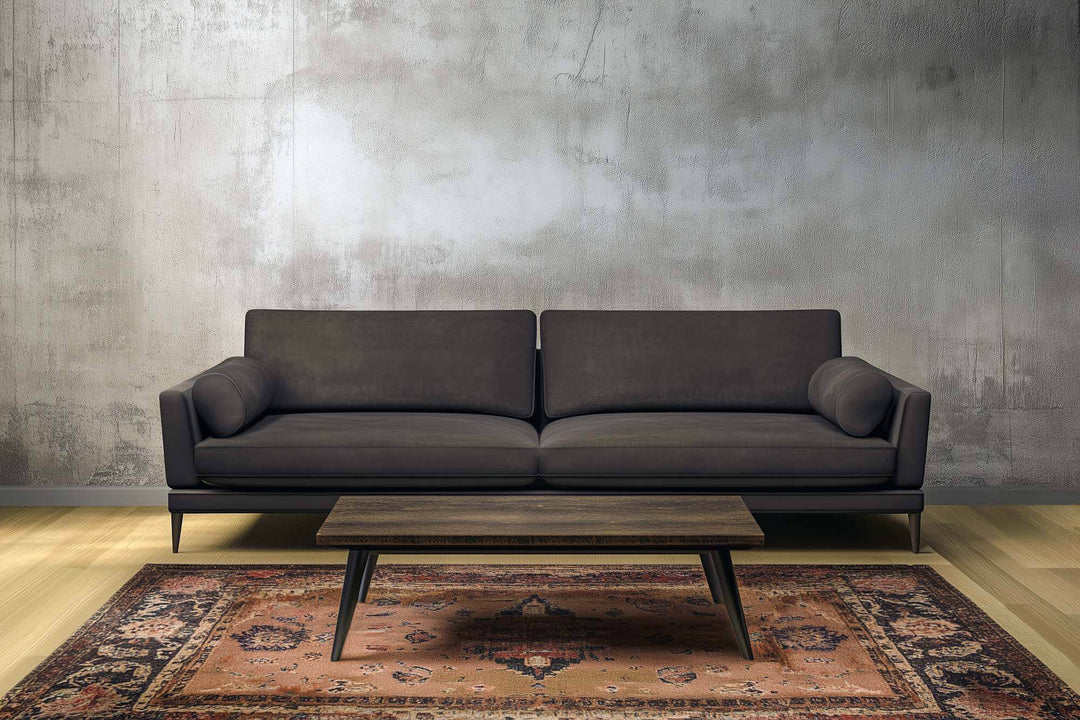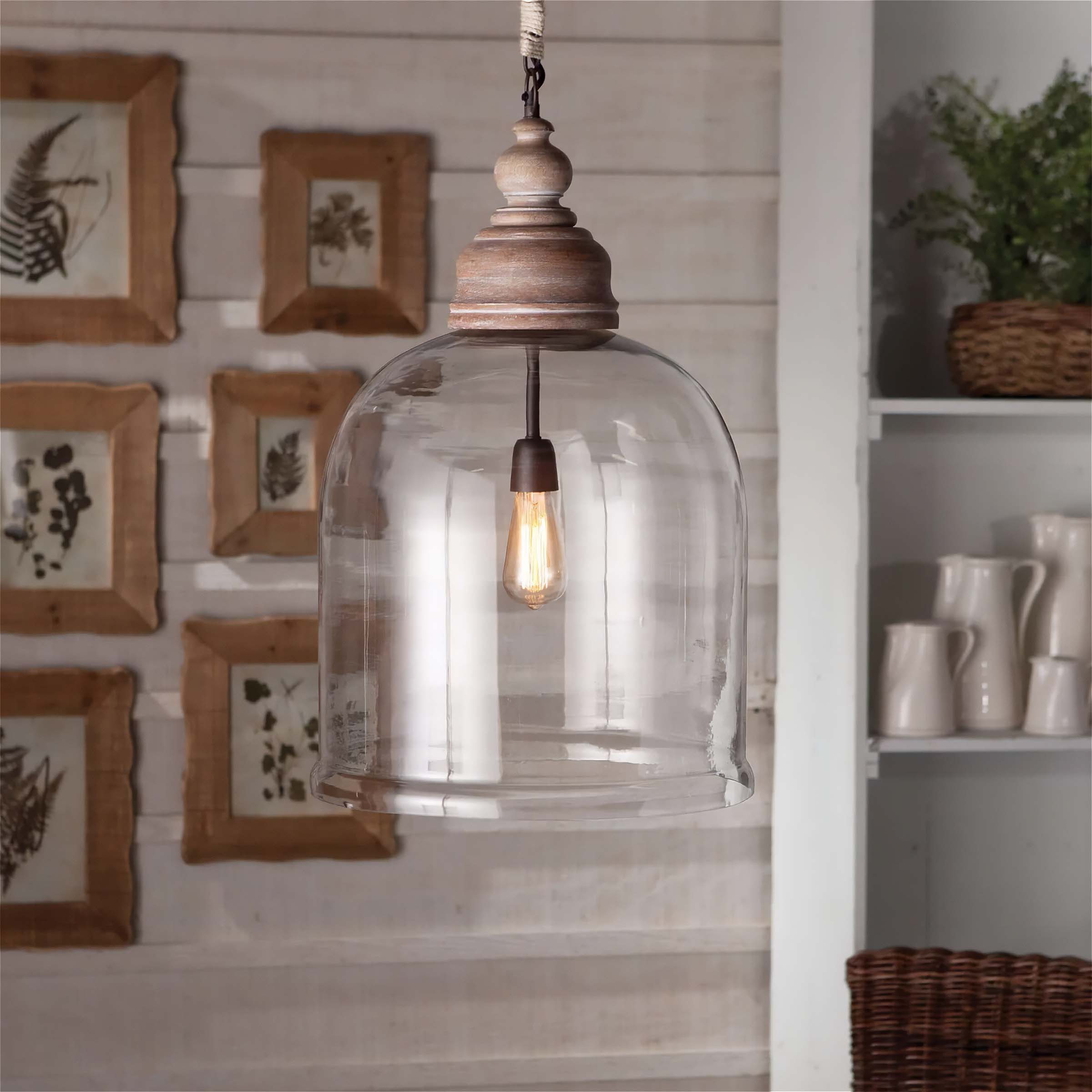
Vintage Pendant Lights
The Timeless Romance of Vintage Pendant Lighting
There is something ineffably tender about the glow of a pendant light. Suspended like a jewel from above, it casts its warmth not only across a room but also across memory. Vintage pendant lights, in particular, carry us back through time — to kitchens where enamel shades illuminated steaming bread loaves cooling on counters, to cafés in Paris where prismatic globes shimmered through rising coffee steam, to grand Deco ballrooms where chrome pendants glittered alongside champagne and jazz.
While modern lighting often seeks to disappear into ceilings, vintage-inspired pendants command presence. They do not hide; they shine as decorative objects in their own right. Each one embodies craftsmanship, nostalgia, and artistry, transforming the simple act of illumination into a romantic gesture.
A Journey Through the History of Pendant Lights
Victorian and Edwardian Splendor
The late 19th century ushered in the age of electricity, and with it, pendant lights began appearing in parlors, libraries, and dining rooms. Victorian and Edwardian pendants were ornate treasures: etched glass shades with floral motifs, brass chains polished to a warm luster, and flourishes that mirrored the decorative exuberance of the time. To switch one on was to marvel at modern progress, yet the designs retained a handcrafted delicacy that made them feel precious.
Arts & Crafts Integrity
In contrast, the Arts & Crafts and Mission movements at the turn of the century favored honesty and simplicity. Pendants with handcrafted copper frames, mica or stained glass shades, and strong geometric lines reflected a philosophy of integrity in design. They suited bungalows and cottages where simplicity was prized over show. Even today, they evoke a grounded warmth — a reminder that beauty often resides in quiet restraint.
Industrial Strength
Meanwhile, in the early factories of the 1900s, pendant lights took on a starkly utilitarian form. Enamel and porcelain shades — often glossy green, black, or white — directed light downward to illuminate long workbenches. Exposed bulbs hung from rugged cords, chosen for practicality rather than beauty. Yet there is poetry in their simplicity. Today, these industrial designs, once symbols of hard labor, have become beloved for their honesty and grit. Suspended above kitchen islands or loft spaces, they tell the story of work made beautiful by time. Explore our industrial decor collection for ideas on how to create this rugged look.
Jazz Age Glamour
The 1920s and 1930s brought glamour and boldness. In Art Deco interiors, pendant lights featured stepped glass, gleaming chrome, and striking geometric shapes. They sparkled above supper clubs, hotel lobbies, and cinemas, catching reflections from mirrors and polished marble floors. To hang one in a modern dining room is to recapture the fizz of champagne, the swell of a saxophone, and the sense that every evening promised enchantment.
Mid-Century Joy
After the austerity of war, the mid-century years celebrated optimism. Pendant lights embraced cheerful simplicity: globe shades that glowed like moons, pastel enamels brightening kitchens, chrome and brass nodding toward the atomic age. They felt playful, hopeful — expressions of a world leaning toward modernity. To use them now is to invite that same buoyant spirit into our homes, a reminder that design can be both stylish and joyful.
1970s Bohemian Glow
The 1970s turned to earthiness and texture. Woven rattan pendants hung in sunrooms, casting dappled patterns across shag rugs. Amber glass globes gave off golden warmth, perfect for cozy evenings. These designs reflected a cultural longing for authenticity and connection to nature. Today, their revival feels like a gentle embrace — as comforting as the crackle of a vinyl record played late at night.
Why Vintage Pendant Lights Capture the Heart
The appeal of vintage pendant lights lies not only in their beauty, but in the emotions they stir.
-
Atmosphere: Their light is soft, flattering, and full of character — closer to candlelight than the sterile glare of modern LEDs.
-
Craftsmanship: From hand-etched glass to carefully aged metals, every detail reflects artistry and intention.
-
Versatility: They fit seamlessly into kitchens, bedrooms, hallways, dining rooms, and even outdoor retreats.
-
Storytelling: Each pendant carries an echo of its era, filling homes with layers of memory and meaning.
-
Timelessness: Far from passing fads, these designs feel eternal, resonating across generations.
Styling Vintage Pendant Lights Room by Room
The Kitchen: A Hearth of Light
Kitchens, long considered the heart of the home, are natural stages for pendant lighting. Imagine a row of enamel-shaded pendants glowing above a butcher-block island, their light falling like pearls across flour-dusted countertops. Or a single oversized prismatic pendant illuminating the family table, refracting morning light as coffee steams beneath it.
Design Principle: Pendants should hang 30–36 inches above counters or islands. For long islands, a row of three creates symmetry; for smaller kitchens, one bold pendant becomes a focal jewel.
The Dining Room: A Circle of Warmth
Dining rooms invite intimacy, and pendant lights provide just that. A frosted globe pendant, hung low, creates a golden halo across wood and porcelain, turning even a simple supper into a ritual. For those who long for whimsy, a cluster of smaller pendants at staggered heights recalls the charm of Parisian cafés, where light pools across wine glasses and laughter drifts into the night.
Design Principle: Always pair dining pendants with dimmers. This allows for transformation — bright for lively Sunday brunch, soft for candlelit evenings.
The Living Room: Light as Companion
In living rooms, pendants add both focus and romance. Picture a woven rattan pendant above a reading nook, its shadows dappling the walls like lace. Or a brass and glass pendant hung above a rustic coffee table, its warm light catching on crystal decanters. In vaulted spaces, pendants emphasize beams and arches, drawing the eye upward to architectural beauty.
The Bedroom: A Private Retreat
Bedrooms crave gentleness. Replacing bedside lamps with pendants frees the nightstand and creates symmetry. A pair of milk glass pendants flanking the bed glows softly, like moons hovering at your side. For canopy beds, pendants can be hung within the frame itself, enveloping the sleeper in a cocoon of light.
Hallways & Entryways: Invitations of Light
The entryway is the home’s first embrace. A pendant here — etched glass, lantern-shaped, or prismatic — announces character before a word is spoken. In hallways, a series of mini pendants hung at even intervals creates rhythm, guiding footsteps like candlelit beacons down a corridor.
Outdoor Romance
On porches and verandas, pendants extend the home’s welcome outward. A weathered copper lantern conjures evenings in Mediterranean courtyards; a row of enamel pendants strung above an outdoor table recalls summer farm dinners. Always choose pendants designed for outdoor use, ensuring their beauty endures through wind and rain.
Styling by Home Aesthetic
-
Farmhouse & Rustic: Enamel shades, aged iron, and exposed bulbs recall barns and country kitchens.
-
Mid-Century Modern: Globe pendants, colorful enamel finishes, and atomic-inspired designs echo the playful optimism of the 1950s.
-
French Country & Shabby Chic: Distressed finishes, delicate glass, and curving metalwork pair with linens and florals.
-
Art Deco Glamour: Chrome, prisms, and geometric glass pendants sparkle like champagne flutes.
-
Industrial Loft: Bare bulbs, cage pendants, and enamel shades honor the beauty of work and machinery.
-
Coastal & Cottage: Rattan and wicker pendants evoke driftwood shores, while lanterns conjure seaside porches.
Arrangements and Groupings
How pendants are hung transforms their character.
-
Symmetry: A trio over an island or table creates balance and formality.
-
Staggered Heights: Especially striking in stairwells, where pendants seem to cascade like falling stars.
-
Clusters: Different shapes and finishes gathered together create artistic eclecticism.
-
Oversized Statements: A single grand pendant becomes the jewel of the room, commanding admiration.
Practical Considerations
-
Ceiling Height: Maintain at least 7 feet of clearance in open spaces; adjust cords or chains for proportion.
-
Scale: The pendant should relate to the furniture beneath it — harmonious, never overwhelming.
-
Suspension Style: Chains suggest rusticity; cords feel sleek and modern.
-
Comfort: Light should illuminate tasks but never glare into eyes; diffusion is as important as brightness.
Materials and Finishes
-
Glass: Frosted, etched, prismatic, and milk glass shades refract and soften light, lending romance.
-
Metals: Brass, bronze, and copper warm with patina over time, while wrought iron adds rustic gravitas.
-
Enamel & Porcelain: Durable and industrial, yet timeless in their honesty.
-
Rattan & Fabric: Bohemian and mid-century in spirit, they cast dappled, intimate shadows.
The Soul of the Bulb
The bulb transforms the pendant from fixture to experience.
-
Edison Bulbs: Amber filaments glowing like fireflies in a jar — quintessential nostalgia.
-
Soft White LEDs: Modern efficiency softened to feel timeless.
-
Amber-Tinted Bulbs: Candlelight warmth, perfect for romance.
Care and Maintenance
Even beauty requires care.
-
Glass: Wipe with soft cloths to maintain brilliance.
-
Metals: Avoid harsh chemicals; preserve patinas as part of the story.
-
Brass: Choose between gleaming polish or the romance of tarnish.
-
Outdoor Pendants: Seasonal cleaning preserves their welcome against the elements.
Pendants as Gifts of Meaning
Few gifts carry the symbolism of light.
-
Housewarming: A pendant becomes the first star in a new sky — a welcome of warmth and belonging.
-
Weddings: Romantic pendants symbolize the enduring glow of partnership.
-
New Parents: A nursery pendant glows like a guardian star, watching over the next generation.
-
Holidays: A pendant is both practical and poetic, a gift that illuminates for years to come.
Vintage Inspiration, Modern Comfort
Though inspired by the past, today’s pendants embrace modern safety and convenience.
-
LED Edison Bulbs: Nostalgic glow, energy-conscious heart.
-
Safe Wiring: UL-rated fixtures combine beauty with peace of mind.
-
Lightweight Materials: Easier installation, faithful to original forms.
-
Adjustable Suspension: Flexibility for any ceiling height or room.
Light as Memory
Vintage pendant lights are not merely fixtures — they are memories reimagined. They recall the hum of factories, the glitter of jazz clubs, the warmth of farmhouse kitchens, and the intimacy of candlelit suppers. To hang one in your home is to weave history into the everyday, surrounding yourself with light that is not only seen, but felt.
Their glow lingers on wood, glass, and faces — and in those moments, they cease to be objects and become companions, carrying the romance of the past into the present.
Frequently Asked Questions
Understanding Vintage Pendant Lights
Vintage pendant lights carry more than illumination; they carry stories. Their designs recall schoolrooms lit by opal globes, workshops glowing beneath enamel shades, and parlors softened by frosted glass. This group of questions explains what vintage-inspired pendant lights are, how they differ from antiques, and why they hold such an enduring place in the heart of home décor. The answers weave together history, practicality, and romance — a guide for anyone drawn to the nostalgic beauty of light suspended from above.
Vintage-inspired pendant lights are modern creations that faithfully echo the charm of antique lighting. They capture the silhouettes, finishes, and glasswork of past eras, while embracing the reliability and safety standards of the present. Some shimmer like the etched glass shades of Edwardian parlors; others mimic the rugged enamel domes that once illuminated early factories. Their beauty lies in this balance — the look and feel of history, yet the peace of mind of new wiring. Unlike minimalist modern fixtures, these pendants insist on being seen, glowing as decorative heirlooms rather than vanishing into the ceiling. They bring atmosphere as much as light, recalling evenings in kitchens, cafés, or grand halls where pendants once set the mood. To hang one is to let a piece of history shine again, not as a relic, but as part of everyday life.
The pendant lights in this collection are not antiques, but rather antique-style reproductions crafted for modern homes. Authentic fixtures from the past can be difficult to source, fragile to maintain, and often unsafe due to outdated wiring. Vintage-inspired pendants solve these challenges by blending historic beauty with present-day reliability. Their patinated brass, frosted globes, and enamel shades evoke the passage of time, while their wiring and fittings meet contemporary safety codes. This means they can be enjoyed daily in kitchens, bedrooms, and dining rooms without hesitation. They are faithful tributes to history’s most beloved designs — built not to be stored or displayed behind glass, but to live with and love.
Vintage-inspired pendants allow homes to capture the spirit of history without the risks or limitations of authentic antiques. Real antiques, though beautiful, often require rewiring, fragile handling, or compromise when it comes to matching styles and sizes. Reproductions offer the same nostalgic silhouettes — prismatic glass, burnished metals, or milk-glass globes — but with modern wiring and the flexibility to order multiples. They are designed to glow safely over busy kitchens, hallways, or dining rooms, where life unfolds every day. Choosing a reproduction also ensures durability, so their romance is enjoyed for decades rather than reserved for delicate display. In essence, they are history’s poetry written in today’s language — faithful to the past, yet practical for the present.
While both chandeliers and pendants suspend from the ceiling, their characters are distinct. A chandelier spreads light through branching arms, often dramatic and formal, suited to grand entryways or formal dining rooms. A pendant, by contrast, is a single suspended fixture — often simpler, more intimate, and easier to adapt to everyday spaces. Where a chandelier dazzles like a crown, a pendant glows like a jewel, its light focused and tender. Pendants can be hung singly or in clusters, lined in rows over kitchen islands, or suspended low above dining tables for intimacy. Their versatility makes them at home in rooms of every scale, while their historic forms add a layer of nostalgia no recessed light could ever match.
A schoolhouse pendant is a lighting style first popular in the 1920s and 1930s, instantly recognizable by its rounded, opal-glass shade. Originally used in schools, libraries, and municipal buildings, these fixtures spread a soft, even light across entire rooms — practical yet beautiful. Their clean lines and timeless silhouette became beloved staples in American homes, especially kitchens and entryways. Today, vintage-inspired schoolhouse pendants continue that tradition, offering a gentle glow that feels both nostalgic and versatile. Their design recalls chalkboards, polished wooden desks, and the steady rhythm of classroom days, yet looks perfectly at home in a modern farmhouse or cottage kitchen. The schoolhouse pendant endures because it balances simplicity with romance, utility with charm.
Installation & Technical Considerations
Even the most enchanting pendant light must be thoughtfully installed to achieve its full beauty. This group of questions addresses the technical details: height, wiring, bulb compatibility, and adjustments. Practicality blends with romance here — for when a pendant is hung at the right level, fitted with the right bulb, and carefully installed, it doesn’t just light a room, it completes it.
The perfect height for a pendant above a dining table is typically 30 to 36 inches from the tabletop to the bottom of the fixture. This placement ensures the light forms a warm halo over the table, inviting conversation and intimacy without casting glare into guests’ eyes. Too high, and the glow feels distant; too low, and it intrudes upon sightlines. A pendant hung correctly feels like a lantern at the center of a gathering, cradling meals in its soft embrace. Designers often suggest adjusting slightly based on ceiling height — with taller ceilings allowing for a bit more space. The goal is always balance: light close enough to anchor the table, yet airy enough to feel graceful. When installed at just the right height, a pendant transforms an ordinary supper into a ritual, every meal bathed in golden atmosphere.
Above a kitchen island, pendants should generally be suspended 30 to 36 inches from the countertop surface. This provides clear light for chopping, cooking, or conversation, while keeping the fixtures out of the way of everyday activity. When multiple pendants are used in a row, symmetry becomes part of the design — spacing them evenly creates harmony, while choosing three pendants over a long island often feels most balanced. For larger spaces, oversized pendants may stand alone, glowing like solitary stars. The height should always be comfortable, with the glow falling gently on the work surface, never harsh in the eyes. A well-placed pendant over an island doesn’t just provide task lighting; it becomes the heart of the kitchen, glowing softly as recipes are shared and stories unfold.
Yes, in most cases pendant lights should be installed by a licensed electrician. While the fixtures themselves are crafted to modern safety standards, safe installation requires knowledge of household wiring and electrical codes. Hiring a professional ensures that the pendant is securely anchored, grounded correctly, and connected with care. It also provides peace of mind that the beauty overhead is matched by safety behind the ceiling. For some plug-in or swag-style pendants, installation may be as simple as draping a cord — but for hardwired fixtures, professional installation is always recommended. The romance of pendant lighting should never be overshadowed by concerns of safety, and an electrician ensures the story remains one of comfort and beauty.
Most vintage-inspired pendant lights can be made dimmable when paired with the right bulbs and compatible dimmer switches. This feature adds remarkable versatility: bright light for bustling mornings, and soft candle-like glow for intimate evenings. Dimming capability allows a single pendant to adapt to every mood, from family meals to romantic dinners. Historically, pendants simply flicked on and off, but today’s designs give far more control without losing their nostalgic charm. When fitted with vintage-style Edison bulbs or amber LEDs, dimming enhances the warm, nostalgic glow these lights are known for. Always confirm that both the fixture and chosen bulb are dimmer-compatible. When properly configured, dimmable pendants become emotional instruments as much as sources of light, shaping atmosphere as delicately as candlelight once did.
The soul of a vintage pendant is often defined by its bulb. Edison bulbs, with their glowing filaments and amber tint, create the quintessential nostalgic look, recalling the dawn of electricity when light itself felt magical. For efficiency, modern LED bulbs are now crafted to mimic that same warm filament glow, offering romance without excess energy use. Soft white bulbs provide an inviting atmosphere, flattering skin tones and evening gatherings alike. Clear glass shades showcase decorative bulbs beautifully, while frosted or milk-glass pendants diffuse light gently, making bulb style less critical. The choice of bulb can transform the personality of the pendant — from industrial grit with bare filaments to candlelit softness with amber glass. Selecting the right bulb means choosing not just brightness, but the emotion you wish to evoke.
Styling & Design
Styling pendant lights is where practicality meets poetry. The right pendant transforms a kitchen into a hearth, a hallway into a welcoming path, and a bedroom into a sanctuary. These questions explore how to choose the right size, finish, and arrangement, and how to blend vintage pendants with other décor styles. Each answer offers guidance rooted in design principles.
Vintage pendant lights have the rare gift of belonging everywhere. In kitchens, they glow like pearls above islands, anchoring conversations and morning rituals. In dining rooms, they hang low, casting a golden halo that gathers people into intimacy. Bedrooms welcome pendants as bedside companions, freeing tables while glowing softly like lanterns guarding the night. Hallways gain rhythm when lined with pendants, each one a small beacon guiding the way. Even bathrooms, when fitted with damp-rated fixtures, can be elevated with vintage charm. Entryways make perhaps the most dramatic statement, where a single pendant announces character the moment one crosses the threshold. No room is unworthy of a pendant’s romance; they bring atmosphere wherever they are hung.
Scale is the secret language of pendant lighting. A small pendant lost above a vast table feels apologetic, while an oversized fixture in a petite breakfast nook can overwhelm. The rule of thumb is to let proportion guide you: for islands and dining tables, pendants should be about 12 to 18 inches smaller than the width of the surface beneath. In hallways or bedrooms, consider ceiling height and room scale, ensuring the pendant feels like a jewel rather than a burden. When in doubt, lean toward slightly larger; pendants are meant to be noticed, their glow commanding presence. Yet always balance romance with practicality — the pendant should illuminate gracefully without intruding. Like the perfect piece of jewelry, its size should feel intentional, flattering the space it adorns.
Yes — and when done thoughtfully, the contrast can be exquisite. A brass pendant with a frosted globe becomes a jewel against minimalist white walls. An industrial enamel shade hung above sleek quartz counters feels both raw and refined. In mid-century spaces, vintage pendants slip seamlessly into the geometry and warmth of the era. The key is to let the pendant act as a bridge, a whisper of history against the clean lines of the present. Instead of clashing, the dialogue between old and new creates depth, making the space feel layered and lived-in. In truth, vintage pendants shine brightest when given such contrast, their nostalgic glow softening the edges of contemporary design.
Certain finishes have endured because they age with grace. Aged brass, with its warm, golden patina, feels timeless in both traditional and eclectic spaces. Oil-rubbed bronze carries depth and gravitas, echoing history’s quiet strength. Polished chrome sparkles with Art Deco glamour, recalling nights of jazz and champagne. Enamel shades — often glossy black, green, or white — recall factories and farmhouses, their utilitarian beauty now beloved in kitchens. Copper, with its reddish glow, adds rustic romance, especially as it darkens over time. Each finish tells a different story, and choosing one is less about trend than about the atmosphere one wishes to summon. The finish of a pendant is its voice; some whisper gently, others command with brilliance.
Grouped pendants create drama and poetry that a single fixture sometimes cannot. Three pendants in a row above a long island create harmony, their rhythm like notes in a melody. Clusters of pendants hung at staggered heights form a constellation, evoking the starry skies of old-world cafés. Over round tables, an odd number of pendants creates balance, while over rectangular tables, symmetry feels most natural. Grouping also allows mixing finishes or shapes, for an eclectic look that feels curated rather than uniform. The beauty of multiples is that they can either echo one another like a chorus or sing in harmony with subtle differences. In every case, grouped pendants create a sense of intention and romance, as though light itself has been choreographed.
Care, Longevity & Maintenance
Like treasured heirlooms, pendant lights reward care with lasting beauty. Glass shades sparkle when kept clean, metals deepen with patina when tended thoughtfully, and outdoor fixtures endure when protected from the elements. This group of questions addresses how to nurture these pieces so their glow remains as timeless tomorrow as it feels today.
Glass shades, whether clear, frosted, or etched, reveal their full beauty when cleaned gently and often. Dust and kitchen residue can dull their sparkle, making the glow less radiant. The best approach is to switch off the light, allow the glass to cool, and then wipe with a soft microfiber cloth. For stubborn spots, use a solution of mild soap and warm water, avoiding harsh chemicals that might etch or cloud the glass. Dry thoroughly to prevent water spots, and handle shades with care, as even reproduction glass carries the delicate feel of history. Cleaning becomes less a chore than a ritual — a way of keeping light luminous, like polishing silver or tending to a treasured mirror. When maintained regularly, the glass rewards with a glow as clear and inviting as candlelight in a freshly polished lantern.
Brass and bronze pendants often develop a patina — a soft, aged surface that adds romance and depth. Many homeowners treasure this natural darkening, as it echoes the passage of time. To preserve it, simply dust gently with a dry cloth and avoid chemical polishes that strip away the character. If a brighter gleam is desired, a touch of gentle brass polish will restore shine, though some of the aged charm may be lost. The choice is deeply personal: some prefer the polished brilliance of a ballroom, others the softened patina of a farmhouse lantern. Either way, the care given keeps the fixture authentic to your vision. With every touch, the finish evolves, becoming less a static surface and more a living record of your home’s story.
Yes — though designed to look nostalgic, vintage-inspired pendants are built for the rhythms of modern life. Their materials are chosen for strength: tempered glass, sturdy metals, and wiring that meets strict safety standards. Unlike fragile antiques, they are meant to hang in bustling kitchens, busy hallways, and family dining rooms without worry. Over time, their finishes may deepen, their glass may need polishing, but their durability ensures years — even decades — of service. In fact, their designs often echo the practical durability of the originals, which once lit schools, factories, and farmhouses with reliability. These pendants are companions, not curiosities — built to carry the romance of history into the heart of daily living. Their endurance is part of their poetry.
Some vintage-inspired pendants are rated for outdoor use, particularly those designed with weather-resistant materials and sealed wiring. Lantern-style pendants in wrought iron or copper can withstand the elements beautifully, developing a patina that only deepens with time. Covered porches and verandas are especially well suited, as pendants here glow like sentinels, welcoming guests with soft, nostalgic light. Always check product specifications to ensure outdoor compatibility, as not all pendants are designed for exposure to moisture. For those that are, a bit of seasonal care — wiping away dust, checking seals, and protecting against extreme weather — will keep them glowing faithfully. Outdoor pendants not only illuminate, they transform the night into a storybook setting, turning a porch supper or twilight gathering into something unforgettable.
The longevity of a pendant comes from a combination of gentle care and thoughtful use. Regular dusting keeps finishes from dulling, while cleaning shades ensures the light shines as intended. Choosing the right bulbs — ones that run cool, such as LEDs — prevents excessive heat from aging the fixture prematurely. Periodically check cords, chains, and hardware to make sure everything remains secure. For outdoor fixtures, protect against prolonged exposure to harsh weather when possible. More than anything, treat the pendant as you would a beloved piece of furniture: something both useful and beautiful, worthy of attention. With such care, a vintage-inspired pendant becomes more than a purchase — it becomes an heirloom, glowing across seasons, years, and generations.
Use Cases & Limitations
Pendant lights are versatile, but every room and circumstance has its own needs. Some spaces call for damp-rated fixtures, others for thoughtful scale, and others still for creative adaptations. This group of questions explores the limits and opportunities of vintage pendant lights — ensuring their glow feels as practical as it is poetic.
Yes, vintage-inspired pendant lights can be used in bathrooms, provided they are rated for damp or wet conditions. Bathrooms often carry steam and moisture, and a pendant not built for such environments may age prematurely. Damp-rated pendants, however, are designed to withstand this atmosphere, allowing nostalgic style to mingle with modern function. Imagine an opal-glass schoolhouse pendant glowing above a clawfoot tub, its light reflecting softly in a gilded mirror — an everyday routine suddenly transformed into a ritual. Always ensure the fixture’s rating matches its placement, especially near showers or sinks. With the right choice, a bathroom pendant becomes more than lighting; it becomes a touch of vintage romance in a space often overlooked for beauty.
Yes, pendants can be enjoyed even in modest rooms, as long as size and scale are chosen carefully. For low ceilings, select semi-flush pendants or compact fixtures that provide intimacy without intrusion. In small bedrooms or studies, a single pendant becomes a jewel — casting just enough light to make the space feel intentional and cozy. The glow should feel like a companion, never an obstacle. Larger, oversized pendants are best saved for taller ceilings where they can breathe. With thoughtful selection, even the smallest of rooms can be transformed by a pendant, turning compact spaces into story-filled retreats. The key lies in proportion: the pendant should sing within the room, not overwhelm it.
Yes, but the approach often involves layering. In a large dining room or open-concept living area, one pendant alone may feel like a whisper. Multiple pendants, spaced with intention, can create harmony, while additional lighting such as sconces or floor lamps ensures balance. The beauty of vintage-inspired pendants is that they are designed to glow warmly rather than glare harshly, so layering helps them fulfill both atmosphere and function. Think of pendants as the poetry of light — soft, romantic, and focused — while other fixtures serve as prose, filling the room with practical illumination. Together, they create a symphony, where no corner is forgotten and every surface glows.
Yes, pendants can often take the place of chandeliers, offering a more intimate and versatile alternative. Where chandeliers spread light broadly, pendants concentrate their glow, creating warmth over specific areas like dining tables or kitchen islands. A cluster of pendants hung together can echo the drama of a chandelier, while still feeling fresh and unique. In smaller rooms, a single oversized pendant can command presence without overwhelming the space. This makes pendants especially beloved in modern homes where flexibility and personality are prized. Replacing a chandelier with pendants doesn’t mean losing grandeur — it means trading formality for romance, sparkle for intimacy, and spectacle for story.
Yes, when designed for outdoor use, vintage-inspired pendants are enchanting additions to porches, patios, and pergolas. Lantern-style pendants, wrought in copper or iron, develop patina that only enhances their old-world charm over time. Hung above outdoor tables, they transform simple gatherings into evenings reminiscent of Mediterranean courtyards or farmhouse suppers. Their glow mingles with candlelight, fireflies, and laughter, extending hospitality into the night. Always choose fixtures rated for exterior conditions, ensuring durability through rain and wind. With the right pendant, outdoor spaces become more than functional — they become stage sets for memory-making, where every twilight meal feels steeped in nostalgia.
Purchasing Pendant Lights
When choosing lighting, beauty is only part of the story. Shoppers also want reassurance: Are these truly vintage? Will they last? Why choose reproductions instead of hunting antiques? This group answers those questions with honesty and romance, showing that vintage-inspired pendants are both trustworthy and timeless. Here, practical guidance meets reassurance, ensuring every purchase feels not only safe, but soulful.
Vintage Shopper curates pendant lights that honor history while embracing modern life. Each piece is chosen for its ability to echo the romance of another time — etched glass recalling Edwardian evenings, enamel shades whispering of factories at dawn, or globes sparkling with mid-century optimism. Unlike antiques, these pendants are wired to today’s standards, UL-rated for safety, and durable enough for everyday use. This means their beauty is not fragile, but reliable. Every design is selected with both aesthetics and practicality in mind, so shoppers never have to compromise one for the other. To purchase here is to invite a piece of history into your home with confidence, knowing it was chosen by those who understand both its story and its purpose.
The quality of a vintage-inspired pendant is revealed in its materials and details. Shades are crafted from glass that diffuses light with elegance, metals are finished to develop richness rather than wear away, and wiring meets strict safety standards. Unlike mass-market imitations, carefully chosen reproductions feel weighty, authentic, and considered. The chains hold with strength, the fixtures glow evenly, and every element is designed to endure. This quality ensures the pendants don’t simply decorate, but elevate a room, becoming companions for years rather than disposable décor. When a pendant feels as though it could have hung in a café a century ago, yet operates flawlessly in a modern kitchen, quality has been achieved.
Authentic antique pendants, while alluring, often come with challenges: fragile wiring, rare or mismatched styles, and difficulty finding multiples for coordinated spaces. Restoring them can be costly, and daily use may risk damage. Vintage-inspired pendants capture the same nostalgic beauty but arrive ready for modern life. They can be ordered in matching sets, paired with dimmable bulbs, and installed without rewiring. Most importantly, they allow the romance of history to be lived with — not locked away as a delicate artifact. Choosing reproductions does not diminish authenticity; it celebrates it in a form that can be cherished every day. They are designed to be not just admired, but used — glowing warmly as part of life’s ordinary yet unforgettable moments.
Yes — when thoughtfully crafted, vintage-inspired pendants capture the soul of the originals with remarkable fidelity. Their glass shades glow with the same softness, their metals shimmer with the same patinas, and their silhouettes echo those once found in schoolhouses, factories, and parlors. What makes them authentic is not age, but spirit. They carry forward the memory of design eras while allowing for modern function. Hanging one feels no less nostalgic than lighting a true antique, because the emotion they summon — warmth, comfort, history — is the same. Authenticity is not only measured in years, but in the stories a piece tells when it glows.
Seasonal & Event Styling
Lighting is not only practical — it sets the mood for life’s seasons and celebrations. Vintage-inspired pendants adapt beautifully to holidays, gatherings, and even the quiet rhythm of changing seasons. This group of questions reveals how to use pendants as companions for memory-making, ensuring they glow as warmly at a winter feast as they do at a summer supper beneath the stars.
Holiday gatherings thrive on atmosphere, and pendant lights create that glow. Hung low above a dining table, a pendant casts intimacy across crystal, porcelain, and evergreen sprigs. The warm amber light mingles with candle flames, turning the meal into a ritual of togetherness. In kitchens, rows of pendants glow like guiding stars as families prepare feasts. Their nostalgic silhouettes — prismatic glass, aged brass, or enamel shades — feel timeless, connecting today’s celebration to those of generations before. The right bulb, dimmed just so, creates a glow reminiscent of firelight, cradling guests in comfort. In this way, pendants become as much a part of holiday tradition as ornaments or carols.
Yes, vintage-inspired pendants are enchanting choices for weddings. Imagine rows of pendants strung in a barn, their light falling like starlight across tables dressed in lace. Or glass globes suspended above a garden reception, their glow mingling with twilight as vows are exchanged. Their romance lies in their versatility — rustic enough for country settings, yet elegant enough for formal halls. Unlike temporary décor, they provide lasting value, able to illuminate the couple’s home long after the celebration ends. A wedding pendant becomes an heirloom, a luminous reminder of the day when two stories became one. Few design elements carry such poetry.
In autumn, vintage pendant lights mirror the season’s warmth. Amber bulbs glow like harvest sunsets, while bronze or copper finishes echo fallen leaves. Hung above dining tables, they transform meals into feasts, echoing the rhythm of harvest suppers. In entryways, lantern pendants greet guests with light as welcoming as a hearth fire. The nostalgia of autumn pairs perfectly with pendants — they feel as though they’ve always belonged to the season of gathering. Their glow softens the shortening days, turning the early dusk into something to savor.
Summer calls for light that feels airy and alive, and vintage pendants deliver. Clear glass shades sparkle like sea glass, while rattan or wicker pendants cast dappled shadows reminiscent of beach cabanas. Outdoors, lantern pendants transform patios into Mediterranean courtyards, their glow mingling with cicadas and evening breezes. Hung over picnic-style tables, they extend twilight gatherings long into the night. Their nostalgia feels lighter in summer — playful, breezy, and free. The romance lies in their ability to make every gathering feel like a celebration of season and sun.
Yes, in spring, pendants become symbols of renewal. Frosted or etched glass shades glow like morning mist, while pastel enamel finishes echo blossoms just opening. Hung in kitchens, they bring freshness to everyday rituals, casting a gentle light over bowls of fruit or vases of daffodils. In dining rooms, pendants at dimmer settings create soft focus for Easter brunches or spring celebrations. Their glow feels alive with promise, as though light itself were stretching after winter’s long slumber. Spring pendants embody the poetry of beginnings — clean, bright, and tender.
Absolutely. Winter is perhaps when vintage pendants shine most romantically. Their amber glow warms rooms against the cold, echoing the coziness of firelight. Imagine a prismatic glass pendant scattering soft light across velvet drapes, or an enamel shade glowing above a kitchen table set for mulled cider. Their presence transforms darkness into sanctuary, turning long nights into cherished evenings. In hallways, they guide like lanterns through quiet spaces, reminding us that even in the coldest months, light is companion and comfort. Pendants in winter are not just fixtures; they are keepers of warmth and memory.




